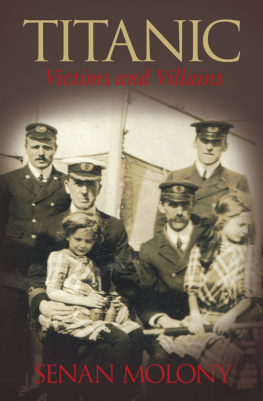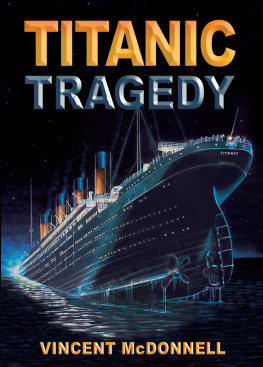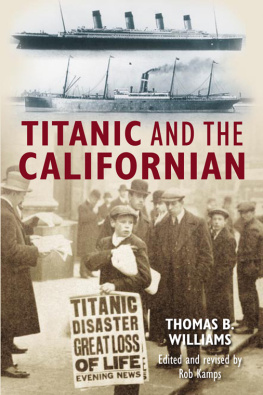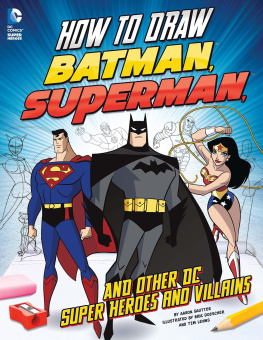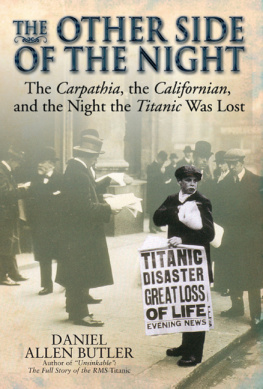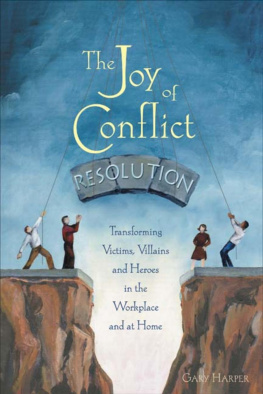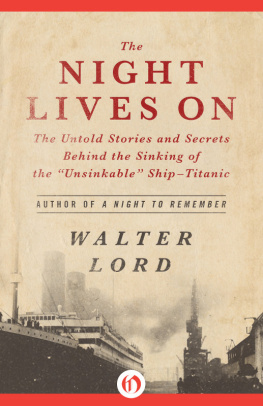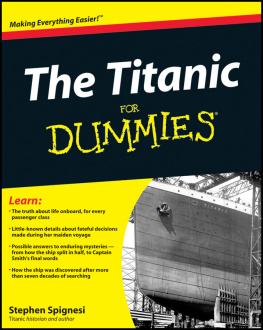Ah! What avails the classic bent
And what the cultured word,
Against the undoctored incident
That actually occurred?
Kipling
CONTENTS

NATURE, NOSTRUMS, AND A MAN-MADE DISASTER
D own, down, down, on the floor of the sea, two miles under the outlaw bergs, lies the Titanic, opened Herbert Kaufman, editorial director of the Womans World magazine, in a piece for the issue of June 1912. So far, so good. His introductory words are as true today as they were when he first penned them a century ago.
But Kaufman himself went down, down, down, from there, plumbing the depths of bathos and maudlin sentimentality. Under the outlaw bergs lies the Titanic, he wrote, a splendid mausoleum of steel and brass, in whose shattered hold rests as fair a company of good knights and brave ladies as ever smiled in the face of death.
Did they indeed, smile in the face of death? Never mind, for Kaufman continues: Soldier and sailor and merchant prince play-actor and journalist idler and drudge peasant and nobleman Saxon and Norman Latin and Celt Slav and Jew strangers in motherhood, wrought into brotherhood, equal at last in the glory of their end.
Kaufman would have the crippled ship as Camelot, her corridors clanking with errant knights, seeking damsels in distress within the belly, indeed, of a damsel in distress the chain-mailed Saxon jousting with narrow-eyed Norman for the right to rescue the noblemans daughter. And look, forsooth, where yonder peasants horse hath knocked the basket of apples
It is easy to scorn. The high-flown (overblown) literary conventions of 1912 are as much a world away from the twenty-first century as everything else belonging to the Edwardian era. But that does not make them, as manifestations of mindset, impenetrable to insight.
Kaufmans microcosm of the Titanics passenger manifest betrays the hierarchy of the day, the human pyramid of hubris, from the great and the good to the down-and-out. The irrelevance of social station in the face of extinction is a point that is both old and obvious:
Sceptre and crown must tumble down, and in the earth be equal made
With the poor crooked scythe and spade.
The British dramatist James Shirley (15961666) wrote it in the seventeenth century.
But Kaufman goes further, venturing into race. Soldier and sailor and merchant prince are joined by Saxon, Slav, Celt and Jew. Strangers in motherhood, there is no co-sanguinity here. But the equality of death erases the naturally presumed inequality of worth. They are wrought into brotherhood by the glory of their end.
The glory of their end. The idler and the peasant came up to the mark by the mere fact of their yielding mortality, inheriting a crown of martyrdom that could not otherwise be theirs. Their glory was in yelping for life in the bone-cutting cold of Atlantic immersion. And the rich man yelped in the night with the best of them.

An early glorification in the press was entitled The Deathless Story of the Titanic in one sense a denial of corpse-ridden reality. Author collection.
O death, where is thy sting? O grave, thy victory? One emigrant ship, among a hundred thousand voyages, has reduced the great melting pot of immigration into a common communion. And out of that melting pot, that sinking barrel, is forged a wholly fictitious folly.
There was no eminence in their end. Individual acts of sacrifice, indeed of an undenied heroism, were matched by panicked wickedness, cowardice, callousness. Selflessness and selfishness marked nobleman and peasant in equal measure, and not necessarily in that order of ascription.
The sinking keg went down, and all were not subsumed in any saving grace of the Unsaved. Humans died as they have always done in terror, dread and pain, aching anguish that may have eked its way to acceptance, if some were eased this way to eternity. There was no glory here, overarching all, as ten times one hundred died and five times one hundred more. It was wholesale slaughter.
The iceberg glides on. Here is the rock on which they perished, great Nature ever gradual in her grinding indifference. Neither innocent nor enemy, the availing ice easily mastered thin walls of steel and Titanic began to succumb.
Kaufman called them outlaw bergs, and ten thousand other scribes it also being the age of execrable odes reached for their nibs to blame the blameless, many invoking the immovability of Natures object, as if she had a scheme toward which she inexorably worked.
The Earth goddess yielded in turn to God himself, especially for those to whom the task of consoling the bereaved had fallen. The fathom-falling Titanic was all part of His unfathomable plan. And God could not be blamed, even if some of the Babel of dying victims were said to have echoed, in their own tongues, the last cry of Christ on the cross: Eloi, Eloi, lama sabachthani? in Aramaic: My God, my God, why hast Thou forsaken me?
The Los Angeles Evening Herald printed such an idea, and put it in the mouth of Sir Cosmo Duff Gordon, an aristocratic survivor who escaped with his wife Lucile in a lifeboat of just seven passengers and five crew; a chosen twelve.
The newspaper reported that the Duff Gordon boat (which incidentally refused to accept any additional passengers from another, overcrowded, craft) was close enough to the bobbing detritus after the sinking to hear such supplications as, My God, my God. But Sir Cosmo said at the British Inquiry that there was silence when the ship went down. He heard only a confused wailing afterwards, nothing distinct.
His wife, a high society couturier, was asked about a direct quote from her lips in the same publication: I remember the very last cry. It was a mans voice calling loudly, My God, my God. He cried monotonously, in a dull, hopeless way. But this Calvary-like final utterance was absolutely untrue, Lady Duff Gordon snorted. Hardly gospel, in other words.

The three authors of the disaster, Rotten Judgement, Glaring Incompetence and Gross Carelessness, conspiring to drag down the Titanic in this cartoon by McRitchie for the Calgary Eye Opener. What may be significant is the caption,Thy Will Be Done, which seems subversive of the general run of maudlin hand-wringing over the whims of Providence. The impulse being indulged was human, the artist contends.
Others, men of the cloth, nevertheless perceived very clear messages, and quickly too. Many cried out from their Sunday pulpits that God was not to be mocked. Their somewhat vengeful Creator appeared to have been almightily angered by advertising claims as to the practical unsinkability of the new White Star liner.
Yet if not suffering from pearly-gate pique at the excesses of the marketing department, the Deity had still delivered deadly consummation for the crime of daring to presume that He would always indulge the caprice of man. Which is akin to having it both ways.
It may have been vanity that impelled the Titanic at 22 knots, or 25 statute miles per hour, in the last stages of her service life. There may have been complacency in the sprint trip of a maiden voyage. And there undoubtedly was utter carelessness about the proximity of ice and the chances of collision.
But the idea of a punishing Providence embodied in ice seems faintly ludicrous today although in 1912 cartoons of an overtly spiritual dimension were commonplace. One showed the
Next page
